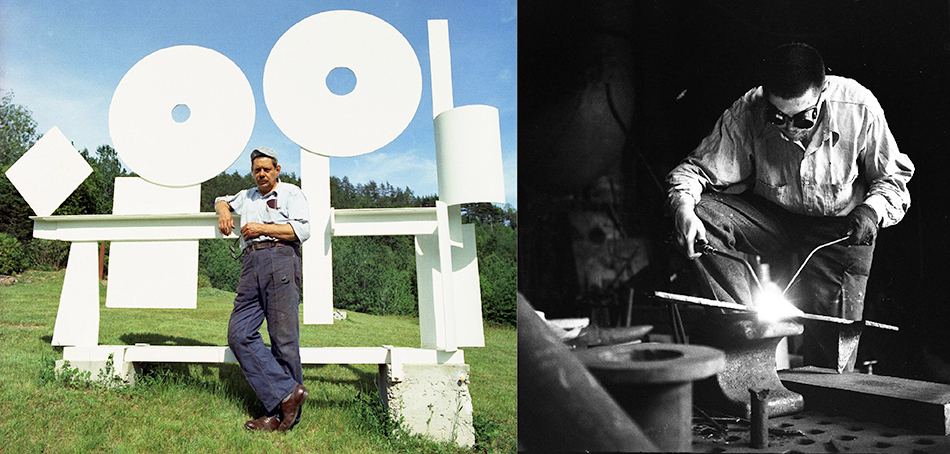 David Smith, a titan of 20th-century art who, over the course of his 33-year career, transformed modernism into a robust but nuanced new artistic language spanning abstraction and figuration.
David Smith, a titan of 20th-century art who, over the course of his 33-year career, transformed modernism into a robust but nuanced new artistic language spanning abstraction and figuration.
David Smith is widely considered one of
the foremost artists of the 20th century
Known for his use of industrial methods and materials – in particular welded metals – and the integration of open space, Smith, the sculptor most closely linked with Abstract Expressionism, revolutionized art in the United States by pioneering a rich synthesis of European modernist influences, and moving beyond those to broaden the possibilities for post-war sculpture. Revered as an innovator, Smith is believed to have created the first welded metal sculpture in America. He paved the way for such artists as John Chamberlain, Mark di Suvero, Donald Judd, and Richard Serra by moving the site of sculpture’s construction from the 19th-century confines of the artist’s atelier and the fine-art foundry, into the expansive, industrial context of the 20th century.
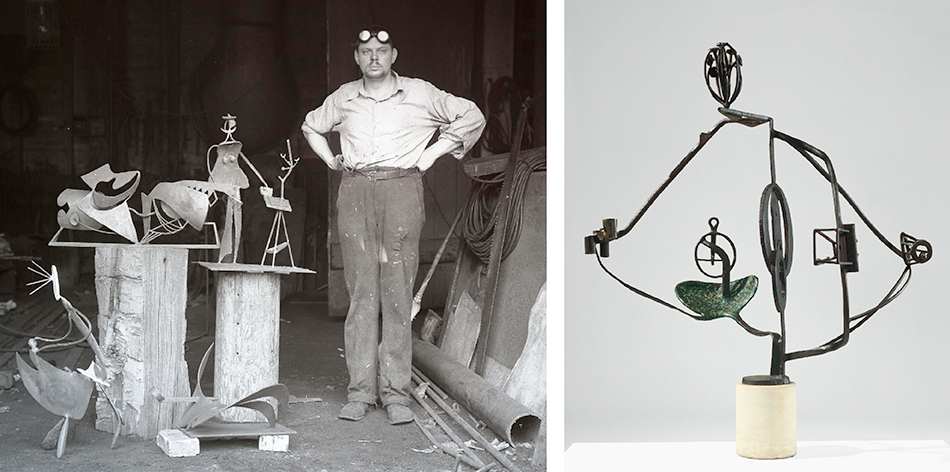
From being an industrial worker… to becoming a famous artist
David Smith was born 9 March 1906, in Decatur IN. During high school, he took a correspondence course with the Cleveland Art School. He worked as an automobile welder and riveter in the summer of 1925. By 1926, he had moved to New York and was studying at the Art Students League. In 1929 he bought a farm in Bolton Landing, in the Adirondack Mountains of upstate New York – an idyllic location where he would settle permanently in 1940 and with which he would be forever associated.
Smith made his first sculptures – painted constructions of coral, wood, and wire – during a trip to the Virgin Islands in 1931 – 1932. He soon began making all-metal sculpture, and set up a studio at the Terminal Iron Works in Brooklyn in 1934. His first solo exhibition was held at Marian Willard’s East River Gallery in New York in 1938. Though a committed painter and draftsman, Smith was decidedly a sculptor – and a concertedly contemporary one at that: ‘What [steel] can do in arriving at form economically, no other material can do’, he said. ‘The metal itself possesses little art history. What associations it possesses are those of this century: power, structure, movement, progress, suspension, destruction, and brutality.’
A solo show of Smith’s work was presented at the Walker Art Center, Minneapolis MN, in 1941. From the following year into 1944, he worked as a locomotive welder in Schenectady NY, a pivotal experience that further expanded the artist’s sculptural language and techniques. From the later 1940s and through the 1950s, Smith worked increasingly in series, often incorporating found objects into more streamlined, lyrical abstractions. His inclusive creative vision led to a great range of stylistic variety and poetic depth in his work in the media of drawing, painting and sculpture.
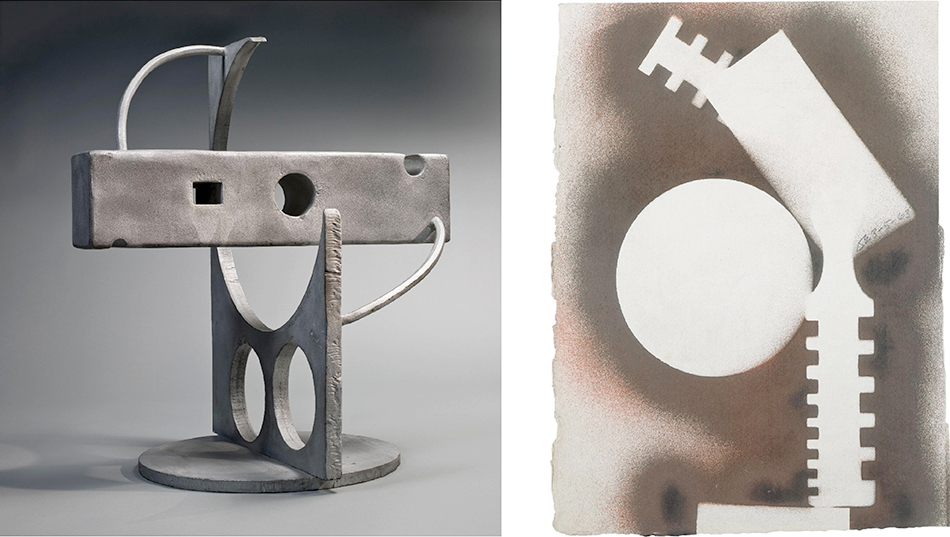
David Smith new aesthetic
Smith’s collage aesthetic, combined with the influence of Surrealism led him, like his contemporaries in the world of painting (Barnett Newman, Willem de Kooning, Arshile Gorky, Adolph Gottlieb, and Jackson Pollock were among his friends) to formulate an entirely new mode of expressionism amid the turbulent context of the Depression, World War II, and the postwar aftermath. Smith’s hands-on approach – he worked directly with his materials, insisting that sculpture should be unique rather than produced by artisans in editions – and his emphasis upon the visual nature of sculpture, helped elevate the medium to a level of authenticity that had largely been the exclusive domain of drawing and painting.
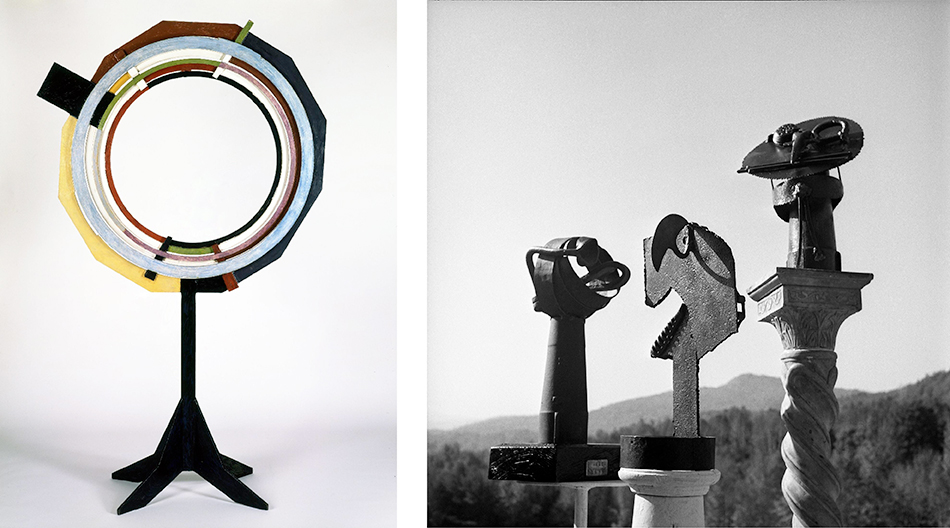
In the 1960s, Smith’s tremendous creative energy and increased financial resources led to an outpouring of monumentally-scaled sculptures with which he famously filled the fields around his Bolton Landing home and studio. In 1961, he began his celebrated Cubi and Zig series of monumental, geometric stainless steel and painted steel sculptures. When Smith died suddenly at the age of 59 in a tragic car accident in 1965, he was at the height of his creative powers. He left behind an expansive, complex, and powerful body of work that continues to exert influence upon younger generations of artists today.
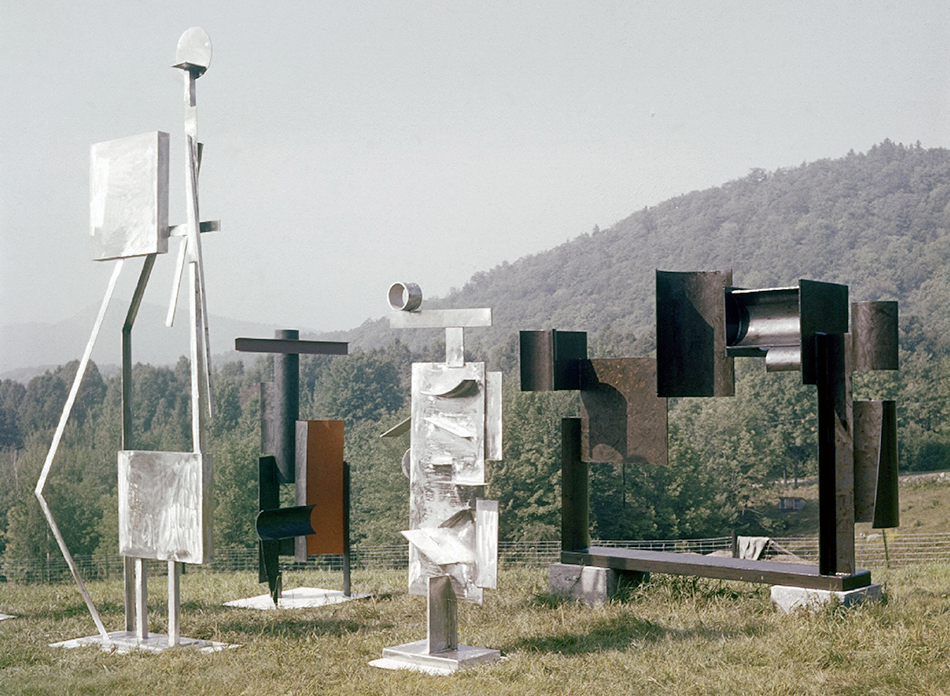
Artworks and exhibitions in mayor museums worldwide
Works by David Smith reside in scores of major museum collections worldwide. The Museum of Modern Art and The Whitney Museum of American Art, New York NY; The Tate Gallery, London, England; and the National Gallery of Art, Washington, are a few of the institutions that have comprehensive collections of Smith’s work. The Storm King Art Center in Windsor NY, possesses one of the most significant institutional holdings of works by the artist. Of these 14 important sculptures, all but one entered the collection soon after Storm King’s co-founder Ralph E. Ogden visited Bolton Landing in 1967, two years after the artist’s death. Ogden, inspired by Smith’s installation of his sculpture in the fields around his home and studio, acquired thirteen works that formed the basis of the outdoor sculpture park.
Exhibitions devoted to the artist’s sculptures, paintings, and drawings have been presented internationally since the 1950s. Smith represented the United States at the São Paulo Biennale in 1951, and at La Biennale di Venezia in 1954 and 1958. The Museum of Modern Art presented his first retrospective in 1957. His work was included in Documenta II in 1959, and Documenta III in 1964. In 1962, at the invitation of Giovanni Carandente and the Italian government, Smith went to Voltri, near Genoa, Italy, and executed 27 sculptures for the Spoleto festival. Dozens of Smith retrospectives have been mounted in the decades since, including shows at the Guggenheim Museum, New York (1969); the National Gallery of Art, Washington (1982); Sezon Museum of Art, Tokyo, Japan (1994); MNCA, Reina Sofía, Madrid, Spain (1996); and Storm King Art Center, New York NY (1997 – 1999).
A David Smith centennial exhibition was organized by the Solomon R. Guggenheim Museum in 2006, and traveled to the Centre Pompidou, Paris, France, and Tate Modern, London, England (2006 – 2007). In 2011 – 2012, the exhibition ‘David Smith: Cubes and Anarchy’, organized by the LACMA Los Angeles County Museum of Art, Los Angeles CA traveled to the Wexner Center for the Arts, Columbus OH; and the Whitney Museum of American Art, New York NY. In 2014, the artist’s work was the subject of the solo exhibition ‘Raw Color: The Circles of David Smith’, at The Clark in Williamstown MA, and Smith’s sculpture and drawing is currently featured in the Hirshhorn Museum and Sculpture Garden’s exhibition, Marvelous Objects: Surrealist Sculpture, in Washington, D.C.
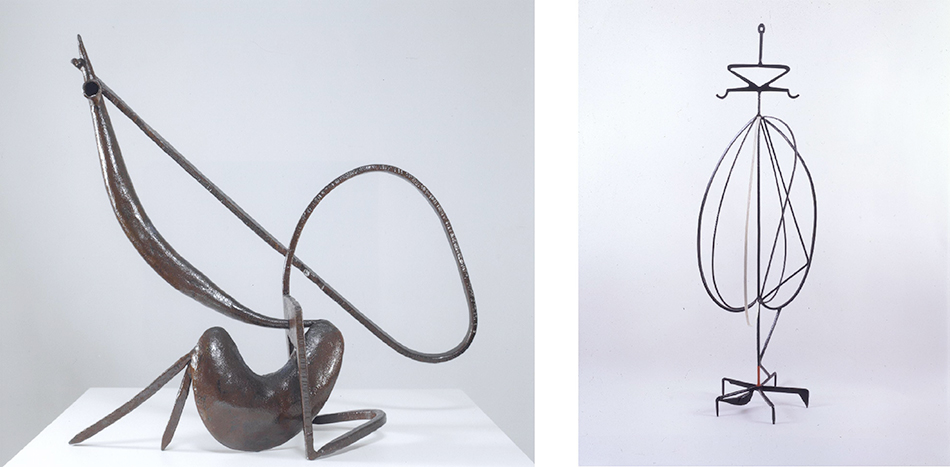
States
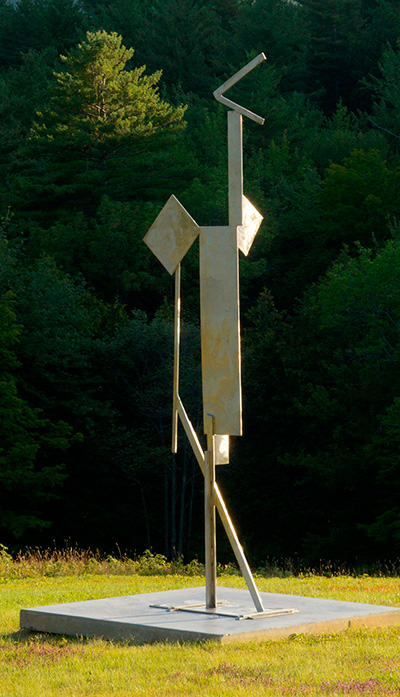 Iwan Wirth, President, Hauser & Wirth. ‘We are deeply honored by this extraordinary opportunity to work with the Estate of David Smith’, said. ‘It’s a privilege to fully engage with the vision and achievements of such a towering figure. From our perspective, Smith stands among the greatest innovators – Alberto Giacometti, Constantin Brancusi, Henry Moore, Alexander Calder – whose inventive thinking, materialization of space, and handling of materials brought a new and deeply humanist soul to sculpture. He is a giant among giants.’
Iwan Wirth, President, Hauser & Wirth. ‘We are deeply honored by this extraordinary opportunity to work with the Estate of David Smith’, said. ‘It’s a privilege to fully engage with the vision and achievements of such a towering figure. From our perspective, Smith stands among the greatest innovators – Alberto Giacometti, Constantin Brancusi, Henry Moore, Alexander Calder – whose inventive thinking, materialization of space, and handling of materials brought a new and deeply humanist soul to sculpture. He is a giant among giants.’
Marc Payot, Partner and Vice President, Hauser & Wirth, commented, ‘Growing up in Switzerland, I always marveled at the sculptures of David Smith exhibited in the museums alongside sculptures by Rodin, Brancusi, and the other leading figures that were central to our art historical consciousness. He is a pivotal artist in the dialogue between Europe and America – a dialogue that is central to our gallery program. materialization of space, and handling of materials brought a new and deeply humanist soul to sculpture. He is a giant among giants.’
Peter Stevens, Executive Director, Estate of David Smith commented, ‘David Smith was a poetic, visionary innovator who refused to accept boundaries. Breaking down the distinctions between drawing, painting and sculpture, and merging nature and industry, he pioneered a fuller expressive language for sculpture. In his own lifetime, and in the 50 years since his death, his work has had a tremendous impact upon the world of art. We are truly excited to partner with Hauser & Wirth in telling this story and extending the artist’s influence into the future. We look forward to expanding our scholarly activities, including the forthcoming catalogue raisonné of sculpture, and to bringing David Smith’s work before ever-growing international audiences.